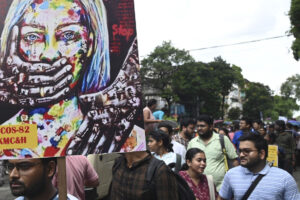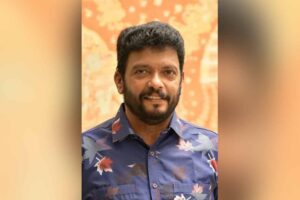The top court said merely because some lobby or pressure groups had sought a certain policy change does not imply there was corruption or commission of crime unless an element of bribery was involved.
Published Date – 07:45 PM, Thu – 5 October 23

New Delhi: The Supreme Court on Thursday posed a volley of questions to the CBI and the Enforcement Directorate about the Delhi excise policy ‘scam’ and asked the anti-money laundering agency how a case was made out against former deputy chief minister Manish Sisodia.
The top court said merely because some lobby or pressure groups had sought a certain policy change does not imply there was corruption or commission of crime unless an element of bribery was involved.
A bench of Justices Sanjiv Khanna and SVN Bhatti grilled both the federal agencies over the alleged involvement of Sisodia in the corruption and money laundering cases, and remarked those cases won’t “stand two questions” before the trial court.
“We understand that there was a policy change and everyone will support policies which are good for business. Pressure groups are always there but policy changes without money consideration will not matter. It’s the money part which makes it an offence. If we go to an extent to say that there cannot be any pressure groups, no government can function…Lobbying will always be there. Of course, bribes cannot be accepted,” the bench told Additional Solicitor General SV Raju, appearing for both the CBI and the ED.
Raju said the policy was tailor-made so as to benefit the wholesalers and increase their share of profit in the liquor business.
“Under the old policy, there was no way you can get the kickback and hence, there arose the need for policy change,” he alleged, adding that under the old excise policy, five per cent profit was fixed for the wholesalers while under the new, it was increased to 12 per cent.
The bench said most of the allegations in the corruption case registered by the CBI against Sisodia were “hearsay”, based on the statements made by approvers and would not pass scrutiny before the trial court without any concrete material.
“Two questions in the cross-examination and this will fall flat,” Justice Khanna observed.
The top court is hearing two separate bail petitions of Sisodia in the corruption and money laundering case registered by the CBI and ED respectively.
The bench also asked the ED as to how Sisodia can be booked for the offence of money laundering when there was no evidence to connect him to the alleged proceeds of crime.
It was referring to the ED’s allegation that Rs 100 crore, which was the proceeds of crime arising out of the changes made in the excise policy, was used by the Aam Aadmi Party (AAP) in the Goa assembly election campaign.
“Have you established the money laundering charge against Manish Sisodia? I am on as far as the money in Goa is concerned. He (Sisodia) has not got the possession of proceeds of crime, somebody else had. It’s not an acquisition by him, but by someone else. Use is also by someone else,” Justice Khanna said.
Raju replied that Sisodia was instrumental in the generation of the proceeds of crime by orchestrating change in the policy.
The bench told him, “You have to establish a chain. The money has to flow from the liquor lobby to the concerned person. We agree with you that it’s difficult to establish the chain because everything is done under cover. But that’s where the competence of investigators comes in and they have to establish the chain.” The money has not gone to the petitioner (Sisodia), the bench said, adding had it been a case of a company with whom he is involved, then the court could consider fastening vicarious liability.
“Otherwise the prosecution falters. Money laundering is entirely a different offence. You have to show that he is in possession of that property. You will have to go by the exact wording of the provision of PMLA and show how you will bring him in,” the bench said.
Raju claimed Sisodia was instrumental in generation of money and changed the policy to enable the profit share of wholesalers rise from five per cent to 12 per cent. The bench said, “When you give bribes, you’re involved in the activity connected to the proceeds of crime. Suppose, let’s assume, ultimately no money is passed on. Will PMLA trigger? What triggers in PMLA is the proceeds of crime. You have to connect the person concerned with the proceeds of crime, directly or indirectly. In the instant case, there is no material to show that he is connected with the proceeds of crime.” Raju said Sisodia is connected to the proceeds of crime, both directly and indirectly, and he generated the money for the use of the political party.
The bench said Raju may have a point that Sisodia was connected to the change of policy but then the case at most will be of abettor and not principal offender under the PMLA.
It told senior advocate Abhishek Singhvi, appearing for Sisodia, that the court normally does not go deep into the case in bail matters but the CBI has pointed out several issues which, according to it, constitute criminal offences and therefore, the court would like him to argue on those points.
“The second part relates to the PMLA and the question which arises for consideration is whether the offence of money laundering is made out or not,” the bench told Singhvi and asked him to prepare for these two points.





